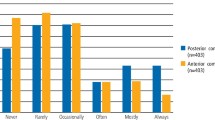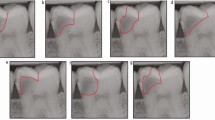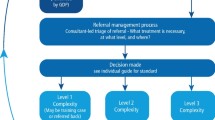Abstract
Aims To investigate the reported use of rubber dam isolation by UK general dental practitioners (GDPs), utilising an internet-mediated (SurveyMonkey) questionnaire reporting the demographic profile of respondents and the attitudes and factors influencing rubber dam use.
Methods A piloted questionnaire was distributed to a random sample of GDPs in a private Facebook group, investigating respondent demographics, clinical applications, and attitudes towards and factors influencing rubber dam use. The data were analysed using descriptive statistics along with chi-squared and pairwise Mann-Whitney U tests.
Results The response rate was 61%, with 403 valid completed questionnaires. Of these, 218 (54%) were female and 185 (46%) were male, with an age range of 23-72 years. Most of them (248; 62%) worked in mixed practices. The majority agreed that rubber dam aids placement of posterior restorations (311; 78%), provides clearer access (308; 76%), enables a higher clinical standard (355; 89%) and increases restoration longevity (257; 65%). Most agreed that proper isolation for root canal/operative procedures cannot be achieved without rubber dam use (329; 82%). Respondents disagreed with the following statements: root canal therapy completed without rubber dam isolation is as successful as those completed using rubber dam (338; 85%), rubber dam is difficult to apply (292; 73%) and rubber dam is disliked by patients (257; 64%). Respondents agreed that rubber dam use is influenced by clinical setting (259; 64%), procedure (390; 97%), choice of material being placed (382; 95%) and ease of application (337; 84%). Furthermore, 218 (54%) of the respondents expressed an interest in further training in rubber dam use.
Conclusions This study provides greater insight into the attitudes and factors influencing rubber dam use, while demonstrating an interest in further training.
Key points
-
The results of this study, which investigated GDPs' reported use of rubber dam, are presented in two parts. The first part reports the demographic profile, attitudes and factors which influenced respondents' use of rubber dam.
-
This was an internet-mediated study using an online survey targeting GDPs in a private social media group on Facebook.
-
The results highlight the potential use of internet-mediated protocols in primary dental care.
This is a preview of subscription content, access via your institution
Access options
Subscribe to this journal
Receive 24 print issues and online access
$259.00 per year
only $10.79 per issue
Buy this article
- Purchase on Springer Link
- Instant access to full article PDF
Prices may be subject to local taxes which are calculated during checkout

Similar content being viewed by others
References
Browet S, Gerdolle D. Precision and security in restorative dentistry: the synergy of isolation and magnification. Int J Esthet Dent 2017; 12: 172-185.
Soldani F, Foley J. An assessment of rubber dam usage among specialists in paediatric dentistry practising within the UK. Int J Paediatr Dent 2007; 17: 50-56.
Reid J S, Callis P D, Patterson C J W. Rubber dam in clinical practice. 1st ed.London: Quintessence Publishing Co, 1991.
Lynch C D, McConnell R J. Attitudes and use of rubber dam by Irish general dental practitioners. Int Endod J 2007; 40: 427-432.
Marshall K, Page J. The use of rubber dam in the UK. A survey. Br Dent J 1990; 169: 286-291.
Wilson N H F, Burke F J T, Brunton P A, Creanor S, Hosey M T, Mannocci F. Dental practice in the UK in 2015/2016. Part 2: aspects of direct restorations, bleaching, endodontics and paediatric dentistry. Br Dent J 2019; 226: 110-114.
Kapitan M, Sustova Z. The use of rubber dam among Czech dental practitioners. Acta Medica (Hradec Kralove) 2011; 54: 144-148.
Gilbert G H, Litaker M S, Pihlstrom D J, Amundson C W, Gordan V V. Rubber dam use during routine operative dentistry procedures: findings from the dental PBRN. Oper Dent 2010;35: 491-499.
Mala S, Lynch C D, Burke F M, Dummer P M H. Attitudes of final year dental students to the use of rubber dam. Int Endod J 2009; 42: 632-638.
Funkhouser E, Fellows J L, Gordan V V, Rindal C B, Foy P J, Gilbert G H. Supplementing online surveys with a mailed option to reduce bias and improve response rate: The National Dental Practice-Based Research Network. J Public Health Dent 2014; 74: 276-282.
General Dental Council. Personal communication. 14 February 2019.
Koshy S, Chandler N P. Use of rubber dam and its association with other endodontic procedures in New Zealand. N Z Dent J 2002;98: 12-16.
Udoye C I, Jafarzadeh H. Rubber dam use among a subpopulation of Nigerian dentists. J Oral Sci 2010; 52: 245-249.
Markvart M, Fransson H, EndoReCo, Bjørndal L. Ten-year follow-up on adoption of endodontic technology and clinical guidelines among Danish general dental practitioners. Acta Odontol Scand 2018; 76: 515-519.
Wang Y, Li C, Yuan H et al. Rubber dam isolation for restorative treatment in dental patients. Cochrane Database Syst Rev 2016;DOI: 10.1002/14651858.CD009858.pub2.
Chisini L A, Collares K, Cademartori M G et al. Restorations on primary teeth: a systematic review on survival and reasons for failures. Int J Paediatr Dent 2018;28: 123-139.
Dias A G A, Magno M B, Delbem A C B, Cunha R F, Maia L C, Pessan J P. Clinical performance of glass ionomer cement and composite resin in Class II restorations in primary teeth: A systematic review and meta-analysis. J Dent 2018;73: 1-13.
Stewardson D A, McHugh E S. Patients attitudes to rubber dam. Int Endod J 2002; 35: 812-819.
Acknowledgements
This study was self-funded and was performed in partial fulfilment of the first author's MSc in Advanced and Specialist Healthcare Articulated Pathway (Advanced Dental Clinical Practice) awarded by the University of Kent. Thanks is given to Dr Tayfun Çağa for proofreading the manuscript.
Author information
Authors and Affiliations
Contributions
Daniel Çağa designed the study, collected and analysed the resulting data, and wrote the first draft of this paper. Anne-Maria Brennan advised on the design of the study in general and the statistical tests in particular, and helped revise and edit drafts of the paper. Kenneth Eaton supervised the study, which included advising on its design and editing of all drafts.
Corresponding author
Ethics declarations
The authors are not aware of any conflicts of interest.
Supplementary Information
Rights and permissions
About this article
Cite this article
Çağa, D., Brennan, AM. & Eaton, K. An internet-mediated investigation into the reported clinical use of rubber dam isolation by GDPs in the UK - part 1: factors influencing rubber dam use. Br Dent J (2021). https://doi.org/10.1038/s41415-021-3083-z
Received:
Accepted:
Published:
DOI: https://doi.org/10.1038/s41415-021-3083-z



